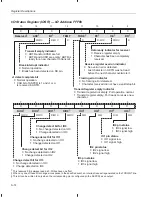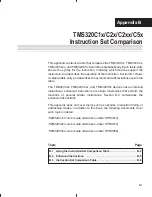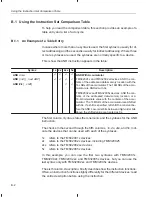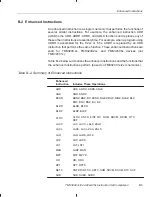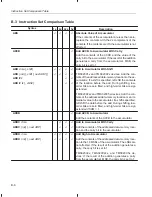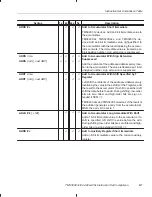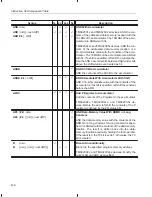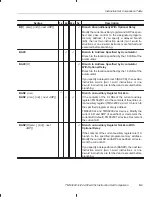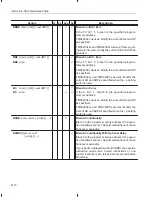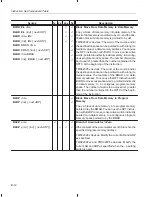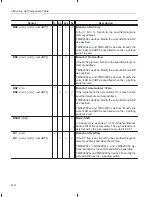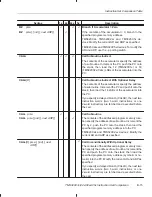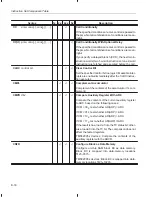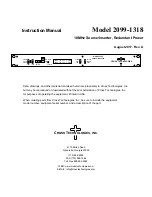
Using the Instruction Set Comparison Table
B-2
B.1 Using the Instruction Set Comparison Table
To help you read the comparison table, this section provides an example of a
table entry and a list of acronyms.
B.1.1 An Example of a Table Entry
In cases where more than one syntax is used, the first syntax is usually for di-
rect addressing and the second is usually for indirect addressing. Where three
or more syntaxes are used, the syntaxes are normally specific to a device.
This is how the AND instruction appears in the table:
Syntax
1x
2x
2xx
5x
Description
AND
dma
AND {
ind} [ , next ARP]
AND #
lk [ , shift]
√
√
√
√
√
√
√
√
√
√
AND With Accumulator
TMS320C1x and TMS320C2x devices: AND the con-
tents of the addressed data-memory location with the
16 LSBs of the accumulator. The 16 MSBs of the accu-
mulator are ANDed with 0s.
TMS320C2xx and TMS320C5x devices: AND the con-
tents of the addressed data-memory location or a
16-bit immediate value with the contents of the accu-
mulator. The 16 MSBs of the accumulator are ANDed
with 0s. If a shift is specified, left shift the constant be-
fore the AND. Low-order bits below and high-order bits
above the shifted value are treated as 0s.
The first column,
Syntax, states the mnemonic and the syntaxes for the AND
instruction.
The checks in the second through the fifth columns,
1x, 2x, 2xx, and 5x, indi-
cate the devices that can be used with each of the syntaxes.
1x
refers to the TMS320C1x devices
2x
refers to the TMS320C2x devices, including TMS320C25
2xx refers to the TMS320C2xx devices
5x
refers to the TMS320C5x devices
In this example, you can use the first two syntaxes with TMS320C1x,
TMS320C2x, TMS320C2xx, and TMS320C5x devices, but you can use the
last syntax only with TMS320C2xx and TMS320C5x devices.
The sixth column,
Description, briefly describes how the instruction functions.
Often, an instruction functions slightly differently for the different devices: read
the entire description before using the instruction.













